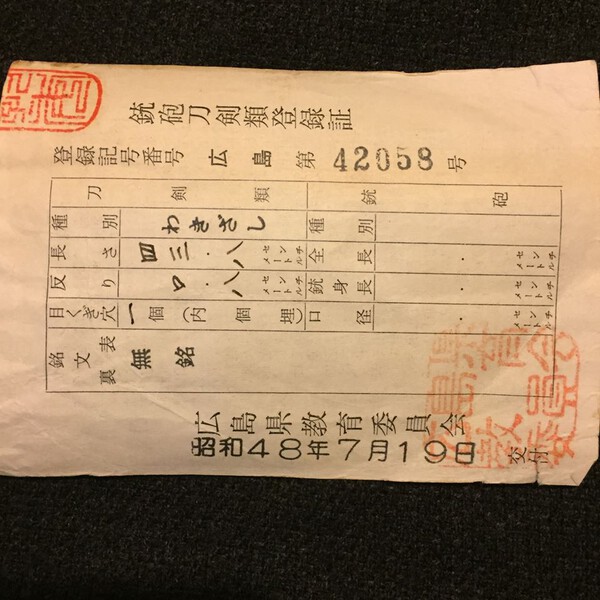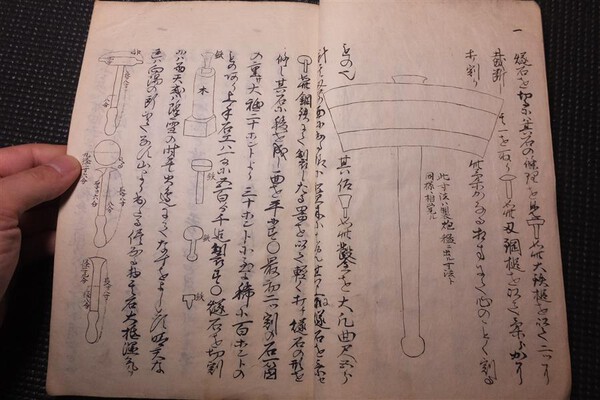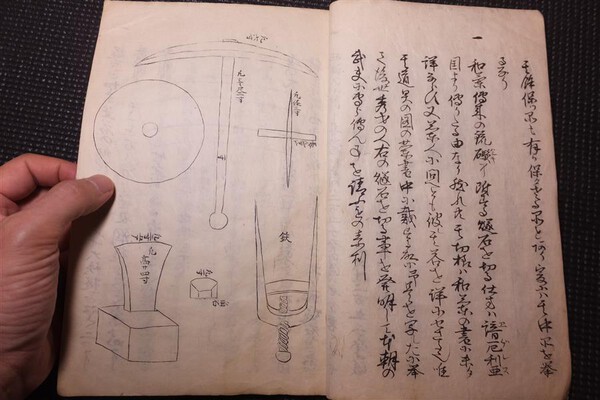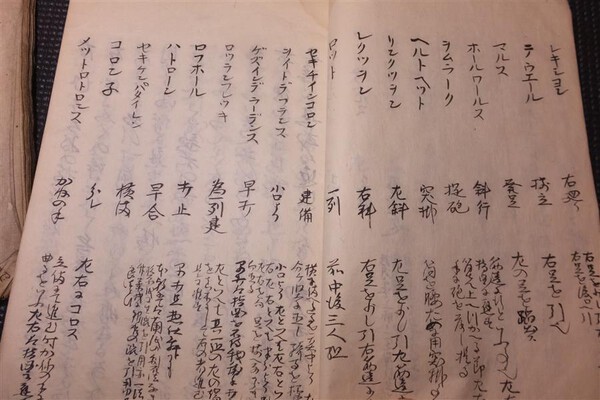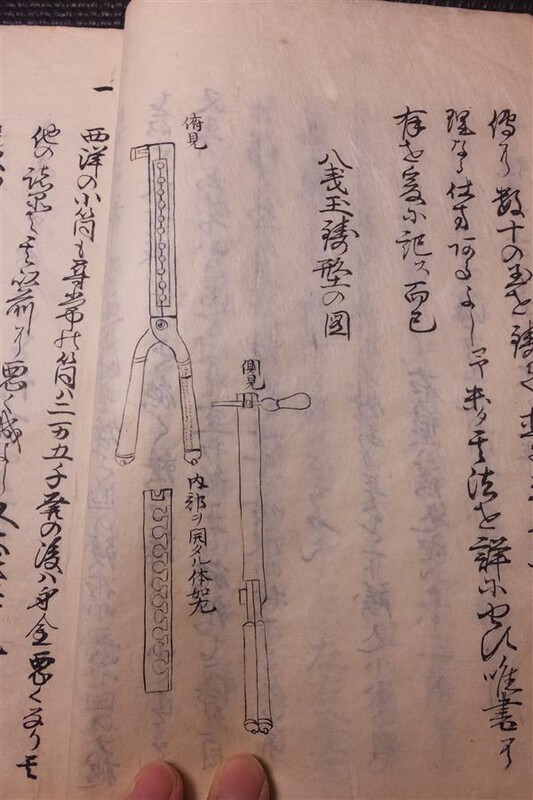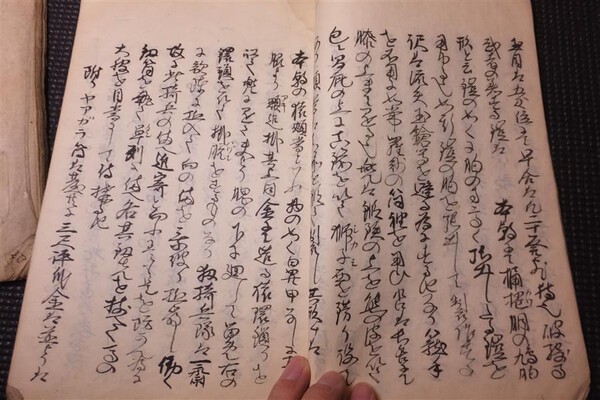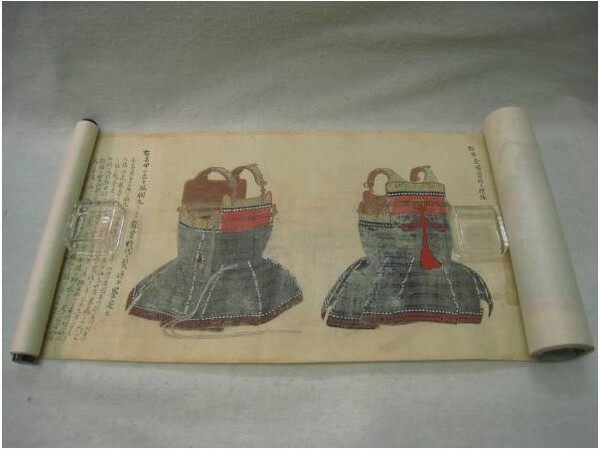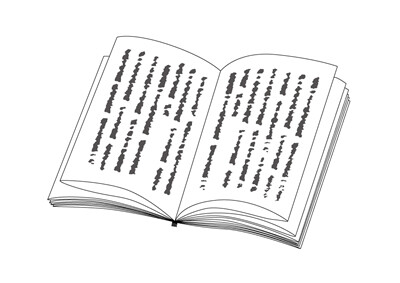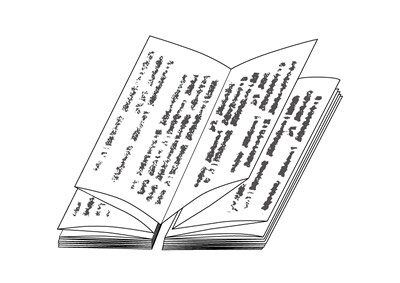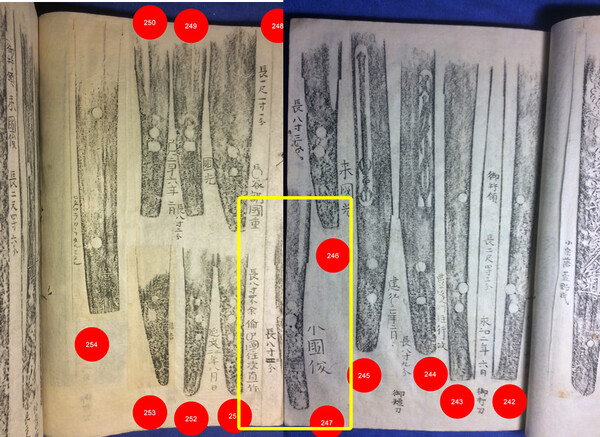-
Posts
361 -
Joined
-
Last visited
-
Days Won
3
Content Type
Profiles
Forums
Events
Store
Downloads
Gallery
Everything posted by Randy McCall
-
With my recent sword purchase there was also a sword license. I found it a little surprising as the dating used on the license is in a combination of Japanese eras/months/days and Arabic numerals, eg 昭和 48, whereas most other examples of sword licenses I've seen have their dates totally in Japanese characters / numbers. Out of curiosity --as I've no other experience with such licenses -- is this form unusual, or simply the style which was used during a certain time period? This license, presuming I'm following the correct style, would be for Showa 48 or 1973. Photo below.
-
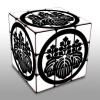
Kicho Nintensho Paper Translation For My Students
Randy McCall replied to Randy McCall's topic in Translation Assistance
Perfect, thanks John! Yes, Danny's site was the one I was mentioning as being my source for general descriptions of information each line contained. Randy -
I recently purchased this blade (my first) from NMB member Marius. I'm very pleased it with it, and have been asked to teach a workshop on it for my iaido students by my sensei. I have enough Japanese to read the date of it's Kicho certificate (Showa 50th year, 4th month) and to decipher the length description (1 shaku, 4 sun, 5 bu), but that's about it. Of course I can reference the work of others for general descriptions of what information each line of the certificate contains, but it would be very helpful to know precisely what the certificate says for the sword description and NBTHK classification lines so I can explain the details to my students. Any help would be appreciated. Many thanks in advance.
-
The latest update: Wim Vanspeybrouck has added the following new oshigata descriptions to the hidensho.com Edo period oshigata manuscript kantei site. Additionally, the Smith's Listing has been updated, and now has 61 individual smiths indexed, with search links allowing users to easily find pages where oshigata for their works are listed. Page 15: Oshigata #53, 54 (supplying the smith's name in kanji) Page 22: Oshigata #84, 85, 86 Page 23: Oshigata #88, 89, 90, 91 Page 24: Oshigata #92, 93, 94 Page 25: Oshigata #97, 98 Page 26: Oshigata #101 Page 27: Oshigata #104, 105 Page 28: Oshigata #107 Page 84: Oshigata #336, 337
-
Undated but listed as Bakumatsu era two-volume manuscript set on the forging of matchlock firearms and cannon (as described by seller). Particularly interesting in that the tools used in the making of these weapons are illustrated and described. The seller's write up is a little obscure, but I believe it states that volume one is 74 pages (37 leaves), and volume two is 78 pages (38 leaves). Condition: Fair - aged, stained, wear, water damage. Auction ending: Nov. 4 http://page21.auctions.yahoo.co.jp/jp/auction/j410698523
-
- 1
-

-
Received also, thanks!
-
The latest site update on the Hidensho kantei site, where I've posted K Morita's and Guido Schiller's above research. Additionally, with the kind permission of Darcy Brockbank, I've posted his research and identification of Juyo class blade oshigata from this thread. Credit for their research is listed in the Comments area for each oshigata. _______ Thanks to the scholarship of NMB members Darcy and K Morita, a number of oshigata have been identified which are listed today as Important Cultural Properties of Japan, or having been judged by the NBTHK as being of Juyo Token or Tokubetsu Juyo Token rank. Research credited to Darcy Page 9: Oshigata #29 - Posted by Wim, verifying the research of Darcy: This sword is a gassaku work of Yosozaemon and Genbei Sukesada and was designated Juyo Token in session 10. Page 60: Oshigata #236 - Granted Juyo Token status by the NBTHK in Juyo Session 13. Page 62: Oshigata #246 - Granted Juyo Token (Important Work — highest quality artistry) status by the NBTHK in Juyo Session 55. Oshigata #247 - Granted Juyo Token (Important Work — highest quality artistry) status by the NBTHK in Juyo Session 8 Page 63: Oshigata #248 - Granted Juyo Token (Important Work — highest quality artistry) status by the NBTHK in Juyo Session 16 Page 64: Oshigata #257 - Granted Juyo Token (Important Work — highest quality artistry) status by the NBTHK in Juyo Session 18, and Tokubetsu Juyo Token (Extraordinarily Important Work) in Juyo session 3 Research credited to K Morita Page 65: Oshigata #260 - Morita-san was able to identify this as being taken from a sword declared an Important Cultural Property. Presented by the Hosokawa clan to Sakai Tadayoshi. The rubbing here shows the full, original nakago (tang). Historically, the sword had the nakago shortened (suriage) around 1868, thus this oshigata preserves the historical image of the nakago as it was. NMB member Guido Schiller was able to supply a literary reference to the odd name inscribed on the nakago, the name of the blade, which refers to an old saying about the sharpness of a blade: Mikaeri 見返 – “looking back” – “A passer-by will not realize he has been cut by it, but will fall in half when turning back”
-
Thanks Morita-san for providing the history of this blade. Also to Guido for the appropriate literary reference. I'll add this information to the information on #260. Not only is this an important piece of historical fact, it starts to help define the age of the manuscript: in this case making it earlier than 1868.
-
NMB and Hidensho.com members Jussi Ekholm and Wim Vanspeybrouck have been working hard over the last few days, doing kantei for dozens of oshigata. Updated pages and oshigata are listed below. Oshigata numbers in black are credited to Jussi. Numbers underlined are credited to Wim. You can also to the actual manuscript page and click on the kantei entry to open the Comments box to see who provided the translation, as well as additional comments, request for aid, discussion on translation, etc. They have also confirmed nearly a dozen omote / ura oshigata pairs. These pairs are now marked on the manuscript photograph for easy reference. Page 10: Oshigata #32, 33 Page 11: Oshigata #36, 37 Page 12: Oshigata #39, 41 Page 13: Oshigata #44, 45, 46, 47 Page 14: Oshigata #51 Page 17: Oshigata #58, 61 Page 18: Oshigata #62, 63, 64, 65, 66 Page 20: Oshigata #73, 77 Page 21: Oshigata #78, 79, 80, 81 Page 53: Oshigata #204, 205, 206, 207, 208
-
Credit to HIdensho.com and NMB member maurice_lmb for his latest kantei work on the following oshigata from the Edo period oshigata manuscript: Page 2: Oshigata #3 Page 10: Oshigata #33 Page 12: Oshigata #40, 42 Page 14: Oshigata #48, 49, 50, 52 Page 15: Oshigata #52 Additional note: All smiths listed in our Oshigata Smith Listing now have an automated search link beside their name, to enable users to quickly locate the oshigata by specific smiths. Some of the latest kanteied oshigata do not yet have their smith's listed in the Listing. These will be added shortly.
-
A collection of 10 handwritten manuscripts and woodblock printed books from the Edo (and possibly later) periods, on equestrian and foot military battlefield strategy tactics. Unusually, according to the seller, these draw on the strategies of Uesugi Kenshin, a powerful daimyo of the Sengoku period, most famous for being the opponent of Takeda Shingen, whose own military strategies form the basis for the much more well known military strategy texts Koyo Gunkan Many diagrams, tables, woodblock printed charts. Many of the manuscripts have extra notations and text written in as addendum. I've never seen a gathered collection of Uesugi's military theory before. It is also very rare to see an entire disparate collection sold online as one lot. Therefore I would expect to these items sell for a higher than usual price, perhaps exceedingly so. Condition: Varies from item to item, but generally Fair to Good - aged, stained, foxing, tears, wrinkles, insect damage Auction ending: October 20 http://page22.auctions.yahoo.co.jp/jp/auction/l365985446
-
The seller is listing 1780 copy of the Kozukenosuke-Kira estate floor plan and surrounding streets. This is the estate which the 47 Ronin attacked in order to capture Lord Kira and get revenge for their lord's death. The seller notes the 1780 copyist was apparently a member of the clan holding the estate, who had access to the original (1703) floor plans. Many notes accompany the diagrams, apparently describing the estate and attack. As always with exceptional items, buyer beware. With three days yet to go in the auction, bidding is presently (Oct 10) 36,500¥ Condition: Fair - aged, stained, ink stained, foxing, wear Auction ending: October 14 http://page19.auctions.yahoo.co.jp/jp/auction/x461730063
-
An exhibition of more than 20 blades by the Muramasa Sengo is running from now till October 16 at the Kuwana Museum in Mie Prefecture, Japan Following are two links for this story, both with many pictures... but I noted that there were many more pictures and extra text in the Japanese version, which may be of interest English link: http://en.rocketnews24.com/2016/09/23/amazing-exhibition-of-japans-legendary-cursed-katana-is-going-on-right-now%E3%80%90photos%E3%80%91/ Japanese link: http://rocketnews24.com/2016/09/21/802424/
-
With thanks to Hidensho and NMB member maurice_lmb for his kantei contributions, listed below: Page 7: Confirmation of Oshigata #22, 23 Page 10: Oshigata #31 Page 16: Oshigata #55, 56, 57 Page 17: Oshigata #59, 60 Page 18: Oshigata #66 Page 19: Oshigata #68, 69, 70, 71, 72 Page 20: Oshigata #74, 75, 76 Page 25: Oshigata #96 Page 40: Oshigata #153, 154 Page 51: Oshigata #197, 198 Site Update All identified oshigata are now visible on their pages, directly under the manuscript page image. You can click on the oshigata description to open the commenting box if you wish to discuss the blade or oshigata, add information, suggest alternatives, or supply some history or interesting information. Any factual information or comments will be added to the visible oshigata description. I am in the process of enlarging the Oshigata Smith Listing page. Eventually links will be added beside each smith; one link will automatically show a listing of all pages of this site where the smith’s name is mentioned. Another link will lead to a history / description of that smith, mostly using Markus Sesko’s excellent Genealogies and Schools of Japanese Swordsmiths
-
Thanks to NMB members Wyn and Jussi, all oshigata on the first 9 pages of the manuscript have been identified, along with another 20 or so others spread throughout the rest of the notebook. Verified omote/ura pairs are marked. A work-in-progress list of all identified smiths will be found under the "Oshigata Smith Listing" tab, located in the right-hand-column of the home page only. Direct link: http://hidensho.com/oshigata-smiths-index/ As of today, the general public can sign up to receive email notifications of the latest kantei additions, site updates, historical views of oshigata smiths, manuscript analysis, etc.. These items will appear in our blog; subscribers will receive notifications of new blog posts, listed by category. Anyone interested can subscribe / unsubscribe on the hidensho.com web site by clicking on the "Site Update Notifications" tab. Registered users are automatically subscribed, but will find a link under this tab which allows them to unsubscribe, or control options for what topics they receive notification on, and how they receive receive them.
-
Stunning hand-painted, high detail, full colour scroll on armour. No date available. Silk hyoshi (outer cover), wooden jikugashira, 6.8 metres in length. The text and paintings have faded some with time. Some painted areas show wear or loss of colour. Expect this to go high. As of today the bidding has reached 10,550¥ Condition: Fair - aged, stained, wear, fading, loss of material Auction ending: October 3 http://page3.auctions.yahoo.co.jp/jp/auction/c571836225
-
- 1
-

-
The following oshigata now have notations, thanks to Wim Vanspeybrouck: Page 1: Oshigata #2 Page 4: Oshigata #13 Page 5: Oshigata #14 Thus far, smiths listed include: Bishu Osafune Jyu Kagemasa Bishu Osafune Jyu Motoshige Bishū Osafune Norimitsu (several) Bunmei jū nen hachi gatsu hi Bushū Edo-jū Fujiwara Kunimasa Echizen no Kuni-jū Kanenori Hizen (no) Kuni Jyu Hōshū Takada-jū Shizutoyo Izumi no Kami Kaneshige Kanesada saku Kaneyoshi Kyōtoku ni nen ni gatsu hi Morimitsu Nagamitsu Nōshū Seki-jū Kanetomo Omi Daijo Fujiwara Tadahiro Ōmi no Kami Hōjōji Tachibana Masahiro Ōyama-jū Kanetomo Sanemitsu Taira Katsumori Pro Tip: To quickly get a list of most recent analysis and comments by going to the site home page, looking to the right-hand column, and clicking on RECENT COMMENTS IN THIS DOCUMENT. This will show the 10 most recent. You can view the page in question by clicking on the SEE IN CONTEXT link just under each comment. Some of these blades additional inscriptions, such as description of length, etc.
-
My apologies for those trying, but unable, to reach the Kantei site at hidensho.com. My service provider is having some critical issues, which has had the site down hours at a time, three out of the last four days. At this point I'm having a serious conversation with them. Hopefully things will be resolved shortly.
-
I have completed uploading all images from the notebook, include four pages not included in my digital release, and opened the site to the public. The site lists 109 pages with a total of 424 separate rubbings. http://hidensho.com/ As previously mentioned, only registered members will be able to see the kantei comments of other registered members, add their own, or take part in discussions where the conclusion is debatable. The site has also been set to prevent copying of content, in order to protect the work of participants. Rather than having NMB members PM me their details to be registered, I've placed a form on the site -- the link for which is found by clicking the "APPLICATION FOR REGISTRATION" tab at the top of the left column -- which allows people submit a request to join. Now that the site is public, preference for membership is being given to members of NMB and the various major nihonto organizations. Registration page direct link: http://hidensho.com/application-for-registration/ Note that page images have been uploaded to display at almost life-size (95% of actual size). Unfortunately, at this time I can't give members direct access to the HD raw images through the website. Should you need a copy of a page for close-up magnification, let me know. For those who are already registered, or who need to re-login, the login link is found by clicking on the SPECIAL PAGES header in the left-hand column. Finally, I will be using the website blog to track new kantei analysis, as well as ding historical review of identified oshigata and the swords they represent. Registered members can choose to be notified by email of any new blog postings by going to their profile page (mouse over your username in the top right hand corner of your screen) and click on Edit my Profile > go to the bottom of the page > click Receive Notification. Brian, you can feel free to add this link to NMB's listing.
-
- 2
-

-
The renumbering of pages / oshigata is finished, and another 11 pages have been added, bringing the total number of rubbings to 290. Of note, I've found proof showing it's very likely at least the first section of the notebook is actually a converted scroll. Pages 62 and 63 comprise one leaf of the book; one half of an image is found on page 62, the other half on page 63. Remember that this notebook isn't printed, so it makes no sense this rubbing appears that way. Now, a bit of background history. Heavy, non-absorbent paper which allowed writing on both sides was very expensive in old Edo, and often reserved for religious or government purposes. A much lighter, much more absorbent paper was used by the average person. This paper was so absorbent, you couldn't write on both sides; the ink would come right through. In order to get around this for creating notebooks, papermakers would take a long, continuous sheet of paper, then fold the paper, with each fold in the opposite direction (known as "mountain and valley" folding, creating a fan-folded stack (see image, Click to enlarge) This stack would then be bound on one side (with string, glue or both), creating a "pouch-page" book where the two sides of each leaf was actually two separate layers of the long folded sheet. (image, Click to enlarge) This form of binding was often used to convert an important older scroll into a more accessible and easier to read book format. The scroll would be folded using the first method (mountain and valley folding), then bound. However, because the content on the scroll would not be perfectly aligned to the folds, you'd often see content either running off the page into the binding area, or it would be "broken" in half by the outer fold. Both conditions are found in certain pages of the book. I've mentioned previously that there are oshigata which "disappear" into the binding area. Today I noted that on pages 62 and 63 (the two sides of a single "pouch" leaf), a rubbing is cut in half by the outter edge page fold. See below where I match the images of a oshigata om page 62 (right side of image) and page 63 (left side of image).. again, both sides just one leaf/page. I've also noted there is a different in paper from the first section of the book to later pages. Additionally there are differences in handwriting and rubbing styles as the pages progress. The book appears to be in sections, with many blank pages between sections; I'll be noting the sections in the menu on the website. This suggests the first continuous section of the notebook is likely a converted older scroll, followed with "newer" pages added when the conversion took place. The later sections are in the different hand(s), again suggesting either multiple people had access to this notebook during one period, or this was a generational artifact. One way of approximately dating the first section would be to determine the latest period sword / smith appearing in it. While not definitive by any means, it would certainly suggest a time frame the author was working before... eg, if no Shinshinto smiths are found, there would be a suggestion the author was making the rubbings prior to that period.


